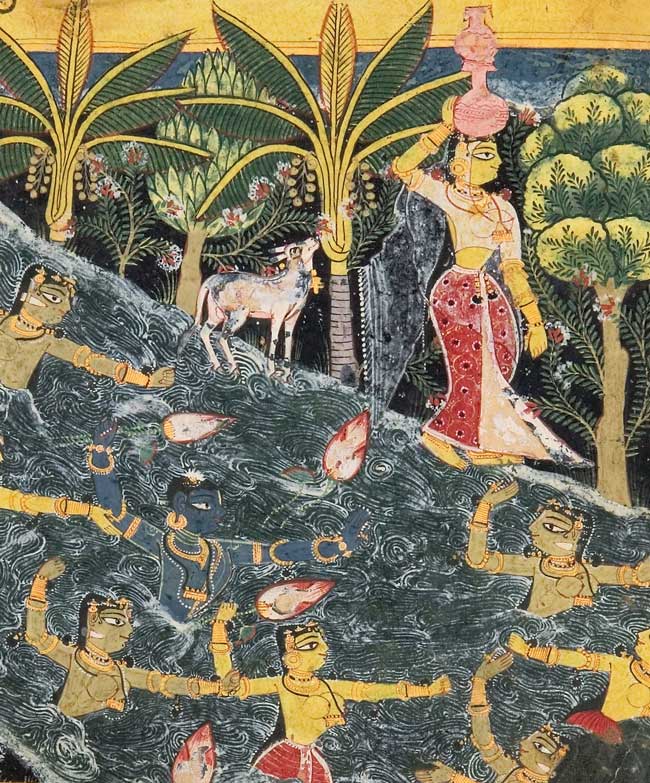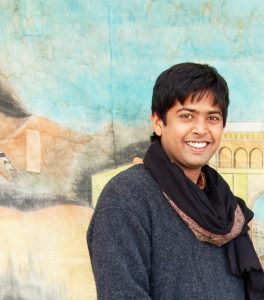

- This event has passed.
How to See Water in an Age of Unusual Droughts: Ecological Aesthetics in the Little Ice Age, India

CMRS Co-sponsored Lecture
The Little Ice Age (ca. 1550–1850), a climatic period marked by glacial expansion in Europe, brought droughts of unprecedented intensity to South Asia. In drought-ravaged north India, the beginnings of the Little Ice Age not only corresponded with the emergence of new techniques of landscape painting and riparian architecture that emphasized the materiality of flowing water but also saw the enunciation of a new theology of Krishna worship that centralized the veneration of the natural environment. Tracing the intersections among artistic practices, theological economies, and the ecocatastrophes of the Little Ice Age, my talk aims to generate an ideation of an eco art history that brings together the environmental and the aesthetic.
Sugata Ray is Associate Professor of South and Southeast  Asian art in the History of Art Department at the University of California, Berkeley. He is the author of Climate Change and the Art of Devotion: Geoaesthetics in the Land of Krishna, 1550–1850 (2019); Water Histories of South Asia: The Materiality of Liquescence (2019; coedited); and Ecologies, Aesthetics, and Histories of Art (forthcoming; coedited). His current book project is provisionally titled Matter, Material, Materiality: Indian Ocean Art Histories in the Early Modern World.
Asian art in the History of Art Department at the University of California, Berkeley. He is the author of Climate Change and the Art of Devotion: Geoaesthetics in the Land of Krishna, 1550–1850 (2019); Water Histories of South Asia: The Materiality of Liquescence (2019; coedited); and Ecologies, Aesthetics, and Histories of Art (forthcoming; coedited). His current book project is provisionally titled Matter, Material, Materiality: Indian Ocean Art Histories in the Early Modern World.
Organized by Lamia Balafrej, UCLA Art History. Co-sponsored by the Center for Medieval and Renaissance Studies, the Center for Near Eastern Studies, and the Dean of the Division of Humanities.
